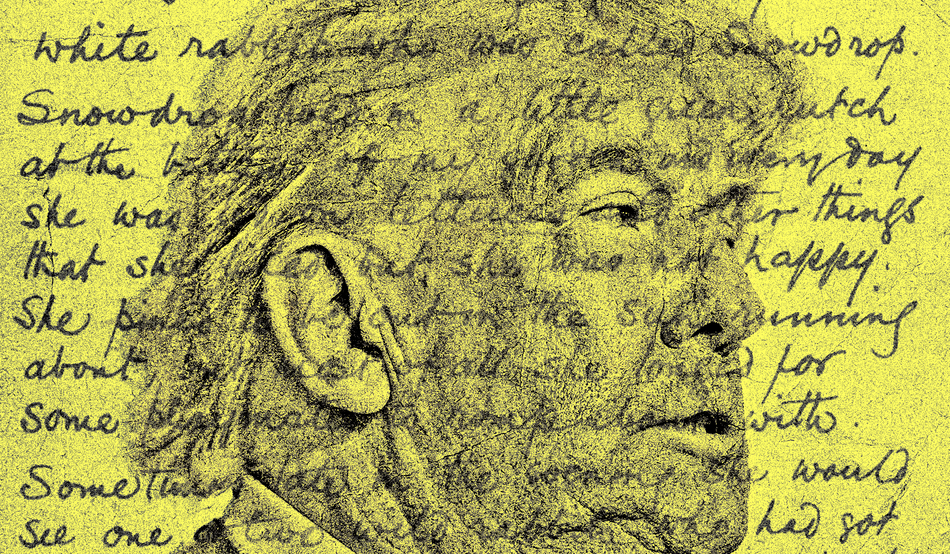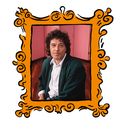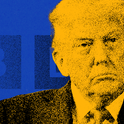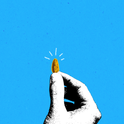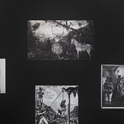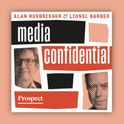In the wake of Donald Trump’s victory in 2016, a spate of reading lists was published, aiming to arm readers with the literary weapons they would need to “resist” the administration. Guides to literary resistance appeared in Vox, Medium and Quartz, cataloguing the titles that any good progressive would “need” on their shelves in order to confront the forthcoming crises. It would be a couple of years before Lauren Oyler criticised the use of the word “necessary” in reviews and blurbs, but before that, and throughout Trump’s first term, literary readers were issued, almost daily it seemed, assignments of moral homework.
Eight years later, in the weeks that followed Trump’s second win, pieces like this were notably absent. Maybe Americans were simply too tired to bother. Or perhaps the moralising of the first term now rang hollow or felt useless. After all, if reading books was supposed to arm the resistance, then how did we wind up here, bewildered and exhausted, facing another four years of mayhem?
Because I wrote a novel that’s about the election and Trump supporters and the American heartland, among other things, I’m sometimes asked what I think of the era’s literature, if not American politics in general. My sense is that these call-to-arms reading lists were an early sign of the literary battlefield that awaited, a landscape where books became amulets and authors were judged by how authentically they translated their identities to a coastal, liberal readership.
Much has been written already about the literary trends of the Trump era. Carlos Lozada’s What Were We Thinking: A Brief Intellectual History of the Trump Era (2020) and Katie Waldman’s essay about it in the New Yorker give a thorough account. The avalanche of novel submissions inflected by Trumpism was covered by Erik Hane in Lithub. Nicholas Gaskell’s essay, “Reality in America, Redux: On Trump Panic Fiction” , is one of the better summations, discussing five of the first term’s most prominent Trump-laden novels and why they “belong to a moment in contemporary US life when political explanation doubled as liberal self-help”.
I broadly agree with Gaskell that novels such as Hari Kunzru’s Red Pill (2019), Patricia Lockwood’s No One is Talking About This (2021) and Ben Lerner’s The Topeka School (2019), although they are preaching to the choir, say something really interesting about the collapse not only of norms and institutions, but also of reality itself. Some of the best books about the Trump era are less about him and more about the funhouse mirror our culture has become in light of him.
I trust Patricia Lockwood to write about Trump’s America because she’s lived it
There’s no question that a writer’s background matters. I trust Lockwood to write about Trump’s America because she’s lived it, growing up in flyover country with a deeply conservative family. But her audience is still the ultra-literate of America’s coasts. It’s not just her—anyone writing about Trump from the periphery, whether it’s the rural south or the Rust Belt or a reservation—finds herself in the position of explaining her background to the reading public in faraway cities.
I worried about this problem with Groundskeeping (2022). When Trump won, liberals were baffled and wanted to know why, and there was suddenly a market for explanations. In my experience, they were often looking for assurances—either that Trump supporters were racist deplorables undeserving of attention or that the answer to all our troubles was a surge of kumbaya-style empathy and enlightened centrism.
My own novel was often cast as the latter, and though I wrote and spoke a great deal about empathy and its vital importance in fiction, I was surprised to see the book read as a call to moderation. My belief then and now is that Trump’s rise was rooted in material conditions, and that empathy is necessary but not sufficient to understand either his support or its antecedents in the political economy—namely deindustrialisation, neoliberal precarity and alienation abetted by technology.
Accordingly, some of my favourite fiction of the era was about the social and historical phenomena that gave rise to Trump and that still nourish his movement. Cherry, for example, by Nico Walker and published in 2018, offered an unsparing portrait of the war in Iraq, the opioid epidemic and the wreckage of a single human life affected by both. Homeland Elegies (2020), by Ayad Akhtar, took the tension between explanation and art as a central theme, and approached identity with a complex ambivalence, ever aware of how money and spectacle shape Americans’ sense of themselves. Finally, Ill Will (2017), by Dan Chaon, might be my favourite novel from the first term. Though it doesn’t address Trump directly, nothing I’ve read renders so vividly the opioid-ravaged landscape of deindustrialised America and its turn toward widespread conspiracist paranoia.
I would argue, however, that the books from the last eight years deemed most “necessary” or “urgent” by urbane tastemakers have been more emblematic of the identity explications I described earlier. To be fair, this often has more to do with the way books are marketed than with their actual quality. Novels like On Earth We’re Briefly Gorgeous (2019) by Ocean Vuong, or last year’s James by Percival Everett, have been lauded for how well they make legible experiences that virtuous liberals “need” to understand, even when the authors make a point of resisting or complicating legibility. To the extent that these readers have begun to consider class, it’s often positioned as yet another identity ripe for translation.
A few high-profile literary controversies from the Trump years illustrate, I think, the anxieties behind these trends. The discourse surrounding Jeanine Cummins’s American Dirt (2020), for example, was almost entirely about legitimacy and not the quality of the writing. Lionel Shriver famously donned a sombrero at the Brisbane Writers Festival in 2016 and gave a speech about cultural appropriation, igniting a debate about who has the right to tell stories of marginal experience. At the same time, beginning around 2015, publishers began to rely increasingly on “sensitivity readers” to vet upcoming titles and discern whether they were appropriative or trafficked in stereotypes, even as some writers called it censorship. This practice is now fairly ubiquitous.
In some ways, these preoccupations are nothing new and represent the inevitable outcome of American fiction’s decades-long obsession with a related subject: trauma. The cultural theorist Catherine Liu has written recently about what she calls “trauma culture”, a phenomenon she traces, in part, back to Oprah Winfrey and the emergence of celebrity book clubs. In her view, trauma narratives serve a similar function as translations of marginalised identity: they individualise suffering and turn self-exposure into a product that the professional-managerial class (PMC) can consume. Liu writes that, by 2021, “…trauma—its scripts, plots and theories—had finally taken up permanent residency in the Anglophone culture industry, from content production to the managerial ethos. From Disney’s Encanto to Jason Mott’s National Book Award-winning novel, Hell of a Book, trauma took center stage in the narratives the liberal PMC produces and consumes”.
The shared assumption connecting all these examples is the belief that a story’s value is partly, or even primarily, a function of the author’s legitimacy. The consensus at the time seemed to be that because marginalised groups were especially susceptible to Trumpism’s cruelties, the virtuous reader should turn her attention to narratives that elevate these experiences from the inside. This, we were told, was a good way of combatting the dark forces Trump had marshalled.
Reading is about as effective as self-care when it comes to acts of resistance
The problem is that reading is about as effective as self-care when it comes to acts of resistance. For one thing, almost no one reads literary fiction, and reading in general has declined over the last eight years. I would suggest, also, that the trend I’m describing—marketing books about trauma and marginality as virtuous homework to a small set of highly educated, affluent readers—just might have something to do with lit-fic’s dwindling popularity.
But even if literary fiction became wildly popular overnight, it would still be worth asking what these books resist and whether they really hold up a mirror to the Trump era. Critics of identity politics on the left have pointed to the way it mystifies class relations in order to manage dissent, as well as the way it offers a safe alternative to elites who would like to consider themselves progressive but have no interest in redistribution. I think a similar mechanism is at work in contemporary literature. If these narratives of explication were actually radical, they would not be so eagerly consumed and flaunted by readers who represent, in almost every way, the status quo.
What comes next for American fiction is hard to answer, but I have a sense of what I’d like to see as a reader. I’d like more stories set in rural places, written by authors without Ivy League degrees. I’d like more work that engages with the absurd—with the funny, weird and sometimes endearing circus of American life in the present. And I’d welcome more books that push beyond safe narratives and offer, instead, work that is volatile and transgressive—that really and truly “disturbs the comfortable”. Even then, reading will still be a poor substitute for resistance. But it may, at least, point us to the right battlefields.
